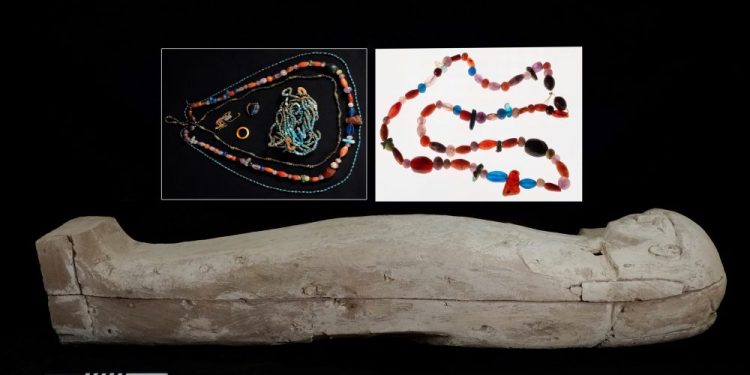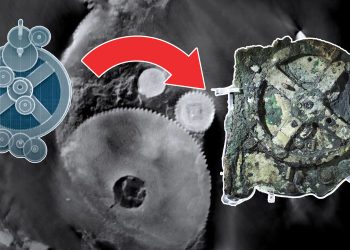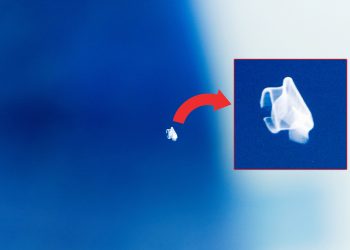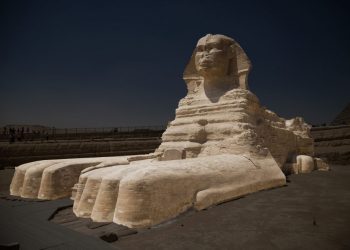The archaeological mission “Djehuty Project“, led by the Spanish National Research Council (CSIC), has excavated, at an archeological site dubbed Dra Abu el-Naga in Luxor (ancient Thebes), an anthropomorphic sarcophagus of the seventeenth dynasty of Ancient Egypt, dating back around 3,600 years. As reported by archaeologists, inside the sarcophagus, they discovered the mummy of a woman of 15 to 16 years of age. The mummy, 1.59 meters tall, was found with her trousseau, two earrings, two rings, and four necklaces, one of them of great value.
This finding is part of the excavation work carried out in Luxor during the past months of January and February, during the 19th campaign of this archaeological mission.
The sarcophagus, made of white painted wood, has been discovered a few meters from the entrance patio to the tomb-chapel of Djehuty (supervisor of the Treasury and the artisan works of Queen Hatshepsut), next to a small chapel made in adobe from the year 1600 BC.
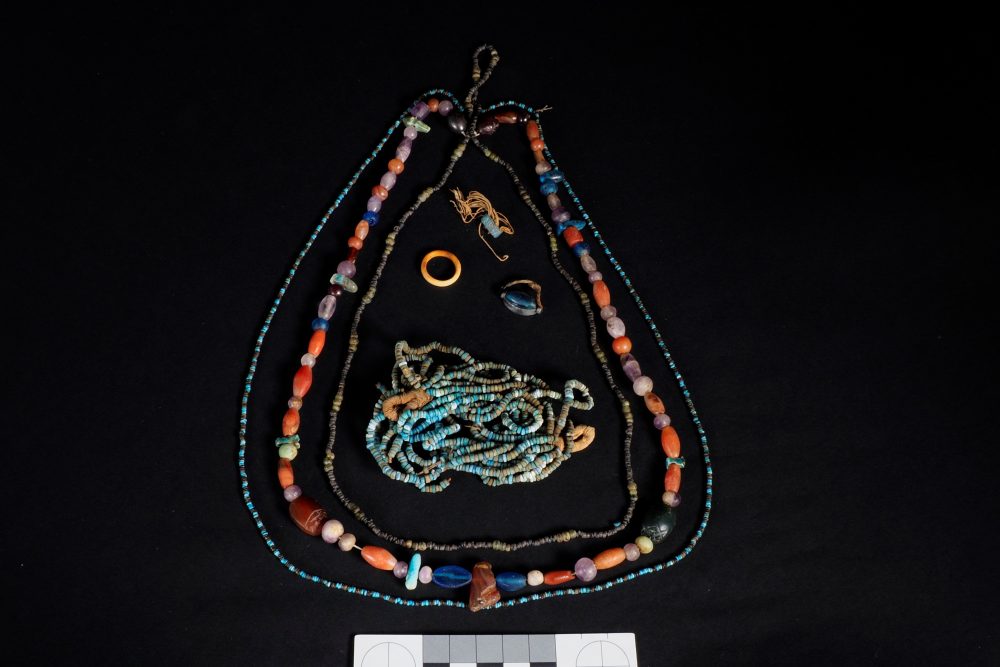
As revealed by archaeologists, the ancient sarcophagus was carved from a single tree trunk, probably sycamore, and is 1.75 tall by 0.33 wide. According to researchers, it was abandoned on the ground by grave robbers in ancient times. Despite this, it was left with some care and remained unopened.
After radiographing the mummy inside its coffin, archaeologists discovered that the mummy was buried with two earrings, two rings (one on each hand), one made of animal bone, and the other of blue glass.
Four necklaces between 61 and 70 centimeters long had been placed on the chest of the mummy. Two of them are made with faience beads (a type of handcrafted ceramic with a glossy finish) in different shades of blue, and a third combines faience beads with green glass beads. The Fourth necklace is perhaps the most stunning.

As revealed by José Manuel Galán, a CSIC researcher at the Institute of Languages and Cultures of the Mediterranean and the Middle East, this necklace is “the most elaborate and valuable” of the entire collection. According to Galán, said necklace is made up of 74 pieces of different shapes carved in amethyst, carnelian, and other semi-precious stones that have not yet been identified, in addition to glass, and seven faience amulets.
“The fourth is the most elaborate and valuable, it is made up of 74 pieces of different shapes carved in amethyst, carnelian, and other semi-precious stones that have not yet been identified, in addition to glass, and seven faience amulets. An amber falcon, representing the god Horus, appears to have been the central figure, flanked by two scarabs (Egyptian amulets shaped like a dung beetle). The wealth of the trousseau for a person so young and with a relatively modest coffin is surprising,” Galán revealed.
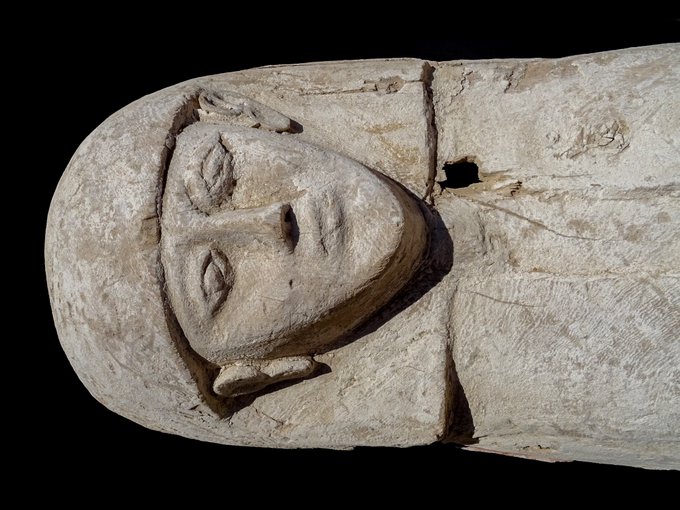
In the area of the necropolis where these objects have been unearthed, the ancient Egyptians are thought to have buried at least three kings of the 17th dynasty and, along with them, some members of their families and courtiers of the time residing in Thebes.
“To date, a dozen coffins have been found on the site left unprotected on the ground, which is unusual. In addition, the percentage of children’s and women’s burials is also higher than in other parts of the necropolis,” Galán revealed.
Archeologists also discovered a small clay coffin, 22 centimeters long, around 15 centimeters wide which still–surprisingly–preserved the knotted rope with which it was intended to remain closed. Inside it, the ancients deposited a wooden human figurine (shabti) wrapped in four linen bandages tied around the neck and ankles. The four fabrics are different and one of them bears a horizontal inscription, in hieratic script with black ink and cursive writing, which identifies the owner as “The Osiris, Djehuty”. That same label was written vertically on the front of the body of the mummy-shaped figurine.
The ancient city of Thebes (present-day Luxor) was an ancient Egyptian city located along the Nile River, some 800 kilometers south from the Mediterranean. It was the capital of the ancient Egyptian civilization for long periods during the Middle and the New Kingdom. The city is known for its valuable minerals which made it an important trade center in ancient times. According to experts, Ancient Thebes was the most venerated city of ancient Egypt during its prime.
The ancient city of Thebes (Luxor) is perhaps most famous for the temples of Karnak and Luxor located on the eastern bank of the Nile River. On the western bank, also part of the city, there is an ancient necropolis of large private and royal cemeteries and funerary complexes.



